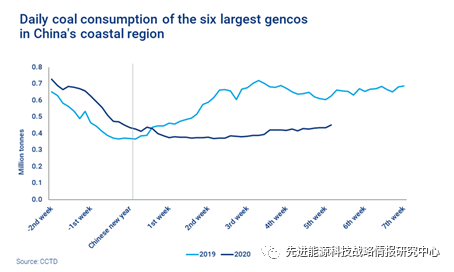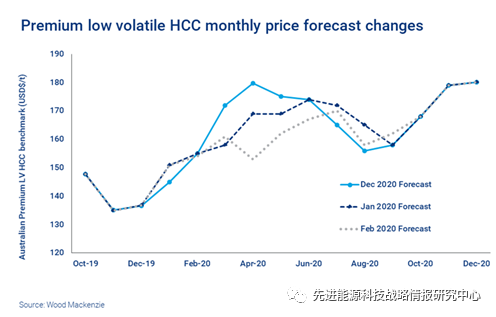Time:2020-04-01 Reading:9641
The COVID-19 pandemic is sweeping the world, threatening human health and impacting the global economy. It has become the biggest "black swan" event in recent years. As the lifeblood of the national economy, the global and Chinese energy industry has inevitably been greatly affected. In response to the epidemic crisis, China has adopted the strictest control measures in the world. Since late January, factory shutdowns and traffic closures have severely affected China's industrial production and economic activities. As the world's largest energy producer and consumer, China's energy demand, supply and development prospects will have a great impact on the world. In addition, China is a global manufacturing power, playing a pivotal role in the global industrial chain, and the stagnation of energy supply and demand will also cause a chain reaction worldwide. As the global epidemic worsens, more and more countries have begun to vigorously implement containment policies, and even block borders and international travel, which will have a great impact on the global energy industry and the flow of commodities. To this end, internationally renowned consulting institutions and think tanks are closely following the progress of the COVID-19 epidemic and have made analysis and forecasts on the impact of the outbreak on the supply and demand of fossil energy in China and the world, the development of new energy industry and climate action. We will continue to present some core views of foreign think tank reports. Today, we publish Wood Mackenzie's report analyzing the impact of COVID-19 on China's commodity market.

Wood Mackenzie: The coronavirus pandemic will lead to a decline in China's commodity demand
Supply chain disruptions combined with labor
shortages will keep factory capacity utilization at low levels in the coming
weeks even as companies gradually resume production, with implications for
commodity markets, according to an analysis published on March 6 by consultancy
Wood Mackenzie. China's steel demand is expected to fall by 2.5% to 5% this
year, with a surplus of thermal coal in China putting downward pressure on
domestic and international thermal coal markets in the short term, while a
shortage of met coal supplies is causing prices to rise for imported met coal.
1. the
extent of the decline in steel demand is unclear
Chinese steel demand is expected to fall by
only 1% this year as companies return to work and government incentives are
introduced. But there are many uncertainties, such as a drop in incomes during
the pandemic, which could affect people's ability to spend once they resume
work. It is also unclear whether the government will invest more in
steel-intensive infrastructure or shift the budget to healthcare and
compensation for businesses. Based on these factors, steel demand could fall by
2.5% to 5% for the year as a whole.
China's crude steel production is expected
to fall 2.4 per cent this year. So far, China's steel production has not been
seriously affected by demand. But that looks set to change, as Wood Mackenzie
recently surveyed 20 steel producers. These producers have halted production
due to high inventories of finished steel and shortages of raw materials. As
demand wanes, steelmakers may not increase capacity utilization. Weak demand
and logistics constraints have led to a surge in steel inventories, which will
not be immediately depleted until demand picks up, even if logistics issues are
addressed.
2.
short-term oversupply of thermal coal will put downward pressure on the market
Nearly 78 percent of China's power
generation capacity has resumed operations, and capacity utilization rate has
continued to recover to 65 percent, double the level at the beginning of this
month, the National Energy Administration said. At the same time, demand for
thermal coal is also increasing, but at a much slower pace than supply, leading
ports and power companies to accumulate inventories, putting downward pressure
on the price of thermal coal at Qinhuangdao port. Hit by China's coal
oversupply, Newcastle Port 5,500 high-ash coal and Indonesian coal prices will
fall to their lowest levels in April and then remain low until the end of the
first half of the year. This will in turn push down the Newcastle 6,000 coal
price, which is expected to average $67 / ton in 2020. The coronavirus outbreak
is already underway in Europe, however, ARA coal prices have fallen to the cost
line, so are likely to remain stable. Continued low LNG prices in Europe, as
well as its strong renewable power generation, will keep a lid on coal prices.

Figure 1 Daily consumption of thermal coal
for power generation in coastal areas of China, 2019-2020 (million tons)
3.
Metallurgical coal supply shortage will improve by mid-March
China's domestic metallurgical coal supply
is in short supply due to manpower shortages and transportation restrictions
caused by epidemic control measures, and the impact on supply has been
exacerbated by the mining accident in Shandong province. Mongolia's imports
have slowed since the closure of its borders in February. Shortages in
Australia and Canada have maintained tight supply conditions for seaborne
trade. Metallurgical coal supplies have been constrained through mid-January
and February. Australian spot prices for premium low-volatile hard coking coal
averaged US $155 / ton in February this year, up from US $151 / ton in January.
The price broke above US $162 / ton on the last trading day due to reduced
supply of high-quality coal in late February. High steel inventories will begin
to limit blast furnace production, and coal supplies are expected to improve
from mid-March. Metallurgical coal prices are likely to reach lows in April as
coal supplies normalize and Mongolia reopens its borders. An increase in steel
demand in May-July as construction sites restart will help meet coal prices.
There are likely to be a lot of incentives in China from the second quarter of
2020 onwards, so while the impact of the virus may persist overseas this year,
sea freight prices will rise significantly by the end of the year.

Figure 2 Australian premium low volatile
coal monthly price forecast (US $/ tonne)
Quote from
